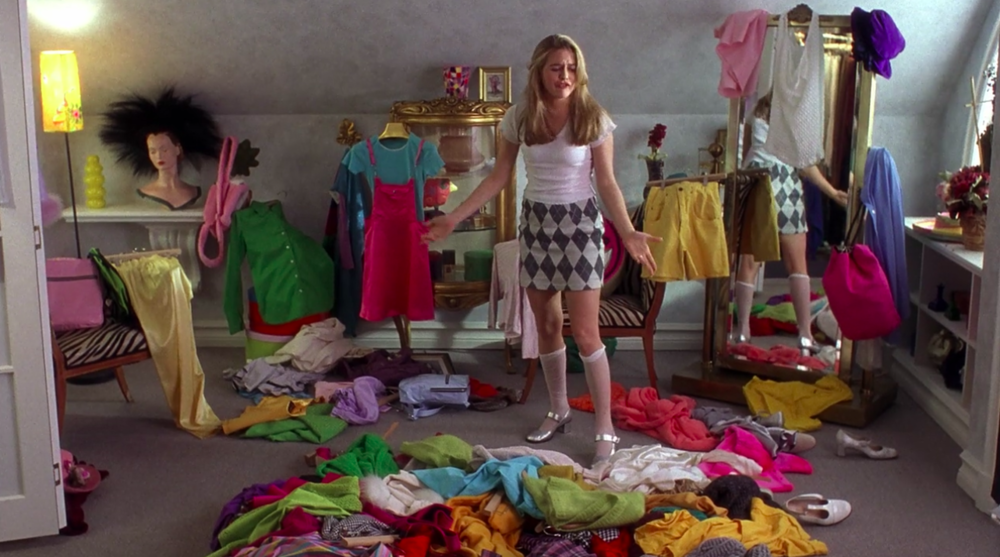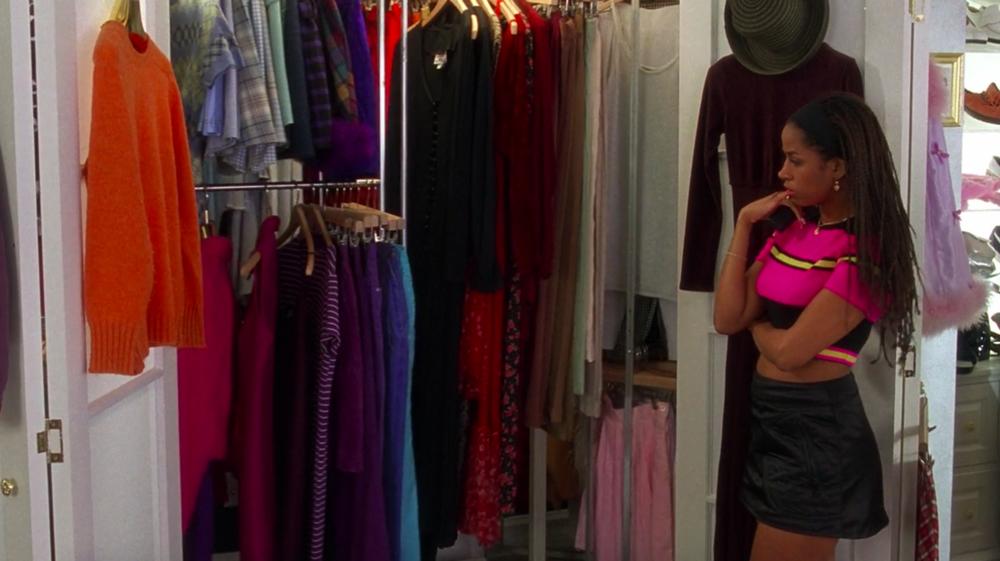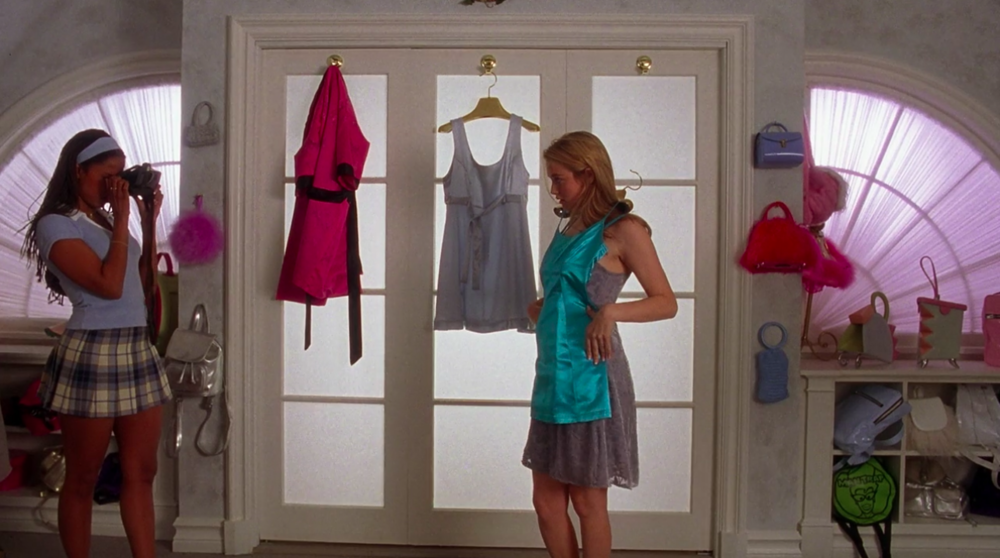Aug 27
Decluttering Sustainably 101

Hands up if you still can’t find that one top that went missing in November 2019 (think Cher looking for her collarless shirt from Fred Segal times one hundred). Yeah, it might be time to declutter your wardrobe.
As much as we all love the idea of decluttering our closets (and our lives) and only holding on to things that we truly treasure, we need to be conscious of where our (pre)loved items end up once we decide to part ways (don’t worry, it’s mutual)- the last place you want your exes to end up is in a landfill (well, not your ex clothes anyway). Since we’re spending more time at home and are more likely to finally take the jump and tackle our closets, there is no better time than now to start asking ourselves the prime question: does this item spark joy? I’m sure a lot of you were inspired by (or at least heard of) the KonMari method that was popularised recently by the one and only Marie Kondo, the ultimate tidying expert. I’ve implemented her method into my closet about a year ago and it genuinely changed my life (I am not being dramatic, it truly revolutionised my entire closet space and the process of getting dressed). Unsurprisingly, decluttering your wardrobe is an effective antidotes to the I-have-nothing-to-wear syndrome (this list also includes the Whering app, naturally), which mostly targets millennial women, but is also frequently found in pretty much every other human being on Earth. So let us guide you through the journey of sustainably decluttering your wardrobe.
Set aside time
The thought of overhauling your entire wardrobe is overwhelming enough as it is, so it’s really important to give yourself enough time to get through it and avoid any meltdowns. Schedule some time in your calendar on a lazy weekend just for this. Truth is, you could probably get it done in just a couple of hours, but we all know how tidying up your wardrobe always turns into a try-on haul, followed by a fashion show and an entire ceremony of goodbyes to your old highschool dresses, so be reasonable. That’s the whole fun of it, so take it easy and really try to enjoy the process (I know it may sound crazy, but it’s a rollercoaster of emotions)- blast your favourite playlist or light a candle, put your hair up into a bun or ponytail and get down with it. A calming and fun environment is key here, and it’ll basically turn into a form of meditation.
“Does the item spark joy”
Take everything out of your closet- clothes, shoes, bags, accessories, underwear (leave jewellery for later) and throw (or gently place) it all into one big pile to visualise just how much you own. This is my favourite part of the process, as it actually puts into perspective all the times I’ve stood in front of my wardrobe thinking I have ‘no clothes’. The pile will seem impossible to tackle and tidy, and you might start regretting everything in this very moment, but rest assured- everything (that makes it to the ‘keep’ pile) will fit back in. Now that your closet and drawers are empty, take this chance to give it a swipe with a clean damp cloth- a lot of dust is accumulated from your clothes living in there.
Decluttering can really be considered an art because everyone sees it so differently, and not all of us are naturally gifted with a love for it. When decluttering, four main questions come into play:
- where do you live?
- what is your lifestyle?
- why do you have this item?
- and lastly, does it spark joy?
We all know that beyond being a form of self-expression, our wardrobe’s functionality should not be compromised. If an item passes these 4 test questions, it’s easy- keep it. If you’re at a crossroads, ask yourself an additional couple of questions:
- have you worn the item in the last three months?
- can you create three outfits using the item?
This is your chance to experiment. Take your time and try to put together three outfits with this item (you could also just use the Dress Me function on our app to simplify your life, Clueless style) and then make the decision. If you still like the item but it doesn’t fit well anymore, consider getting it tailored or even better- DIY.
And then there’s that one special category of items that you probably haven’t worn in years and most likely never will, but it has so much sentimental value that you simply cannot let go. And that’s fine. Decluttering and even minimalism isn’t about not having anything and getting rid of everything- it’s about mindfully picking what you own. There is no reason to get rid of your grandma’s old dress or that really ugly top that reminds you of your best friend from uni. Keep the sentimental items, just don’t use this excuse to keep every piece of clothing you can’t make up your mind about.
Getting rid of old clothes is an emotional process, but if items really don’t ‘spark joy’, it’s time to let go. Don’t be afraid of being left with ‘barely any’ clothes at the end of it and don’t keep unwanted items just for the sake of it. You will most likely not wear them again and will keep experiencing the IHNTW syndrome over and over again, as your eyes will be tricked by the hanging items in your closet, but your heart will know there’s nothing worth touching in there. A fresh start can be daunting, but it’ll feel incredible and a weight will be lifted off your shoulders- we call this wardrobe zen.

“Choose your organising style”
Everyone has their preferred way to organise that just makes sense to them. Here are some ways people organise their wardrobes:
- By category: shorts, skirts, t-shirts, outerwear, knits, jeans- you name it.
- By colour: this way you know exactly where to go look for an item you want to wear and match colours easily;
- By sleeve length: this mostly applies to hanging closets and is really helpful to create a ‘gradient’ that goes from long coats to short-sleeved blouses and creates a simple separation between outerwear and regular tops;
- By season: clothes are rarely season-specific and there may be some overlapping, especially when it comes to spring and autumn, so it would be useful to consider sub-categories (eg. colours you like to wear during these seasons);
- By occasion: divide your closet into sections for work, daytime, night-time, sports and at-home chilling;
Having things in groups or specific areas means you can make the most of what you own, as it makes all the tracking a lot easier. Think about online shopping- they make it easy for you to navigate the store by filtering items by category, fit, size and colour. You don’t want to see the 1798 results, you just want the 50 that fit your filter. Use the same logic here and you’ll improve your morning routine drastically.
PRO TIPS:
- If you have drawers:Fold your tops & denim like Marie Kondo and stack them horizontally (placing the item in a vertical position). There are plenty of tutorials on Youtube for this and trust me- it’s a real game-changer. Being able to visualise your items all at once revolutionises the way you see your wardrobe and opening a drawer doesn’t cause a mini heart attack.
- If you have shelves: Get boxes. Stacking your items on top of one another will only result in a leaning tower of Pisa moment and even if you colour-coded everything, you will most likely mess it up by not wanting to lift half the pile to insert a worn item back where it belongs. So get yourself some nice boxes (or put those old shoeboxes to good use) and stack your clothes in clean rows like Marie Kondo. Seriously, I cannot stress this enough. Even my underwear drawer looks pristine.

“Dispose of items responsibly”
When it’s really the end of the road for (probably at least 2 trash bags) of your preloved garments, we need to ensure that the last place they end up is landfills (and hopefully it never needs to get to that point). The first and easiest step is making sure the clothes are in good condition to increase the chances of your cast-offs going to a new loving home. Any stains or marks should be cleaned, and even go that extra mile to make basic repairs like sewing loose buttons or small tears. It’s a bit of effort, but it really makes a difference and can be the deciding factor in whether something goes to a new owner or a landfill. Here are places where you can donate, sell or rent out your items (and maybe even make a bit of cash in the process):
DONATE
- Traid
- Oxfam
- Cancer Research UK
- Salvation Army
SELL
- Depop
- Vinted
- Rebelle
- Ebay
RENT
- Hurr
- ByRotation
- Our Closet
Your closet is your temple, so keeping it tidy is essential for leading a zen life. If you’re haunted by the temptation to buy something new, first compare it to items that you own which serve the same function and then decide whether you really need it. Avoid impulse buys, always ask yourself ‘Do I really need this?’, limit ‘occasion’ one-time-use items: if you get invited to a fancy party but haven’t got the right attire, rent something out instead. It will turn out cheaper and will definitely make heads turn without taking up space in your wardrobe. If you do buy something, invest in good quality pieces instead of fast fashion. The reason being that a) it’ll simply last you longer and b) if you do eventually decide to part with it and donate it to a charity shop, a fast fashion item might not sell as well as a better item would, so it would still end up thrown away in a landfill. Consider repurposing items or ask your crafty friend to make something new out of your old dress or jeans. Use your old shopping mistakes as an example to stop yourself from repeating the same behaviour. But remember- nobody’s perfect. We’re all just trying our best, and that’s what matters. The more effort you put into this now, the less thought space it will occupy. Take a deep breath- we’re one step closer to #wardrobezen